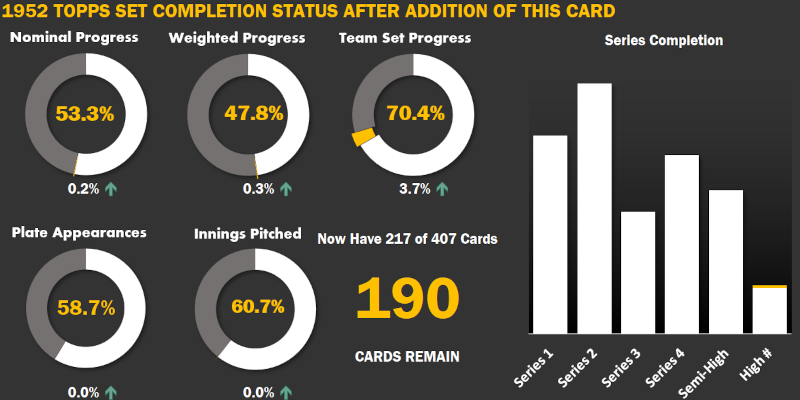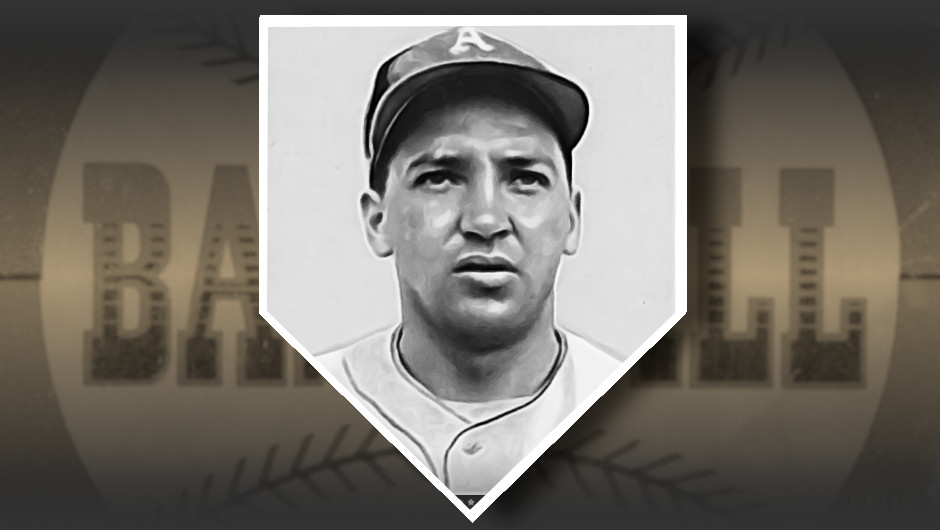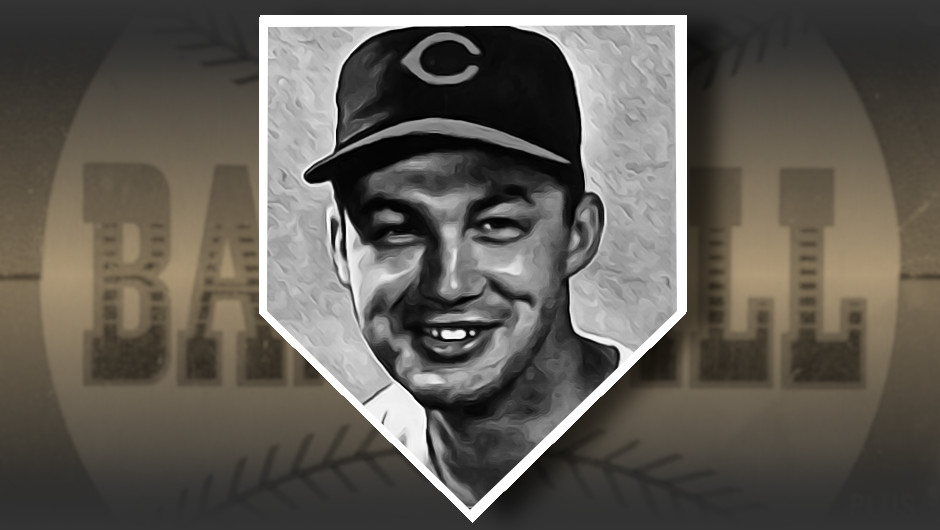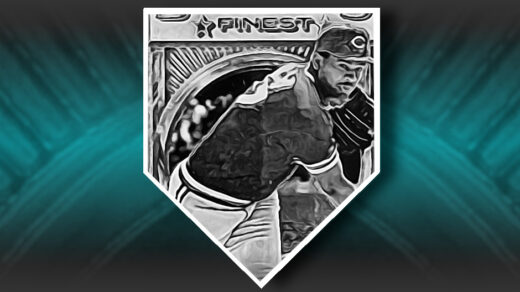I think there is an inverse relationship between the quality of a player’s on field performance and the condition of the baseball cards entering my collection. It makes sense, right? Collectors generally chase cards of the most successful performers, resigning others to common bins, bulk lots, or the spokes of an obliging bicycle. Outsize demand for the largest names is expressed in the form of equally outsized price tags when these pieces of cardboard change hands.
I get it. My Ed Blake card will be much more intact than any Eddie Mathews rookie eventually finding its way into the collection. The Roy McMillan in my possession is multiple grades higher than my beat up Roy Campanella. I fully understand that a Mickey Mantle will only join my ’52 Topps set building project when I find one that has previously been in the possession of the dog from The Sandlot. Most of the 1952 high numbers eventually making their way into my set have some sort of condition characteristic that automatically preclude them from joining someone else’s collection.
That is unless, of course, nobody wants that player. The high number appearing most intact among my cards probably features the least impressive set of stats of anyone in the series. In light of this hypothesis I present to you Exhibit A:
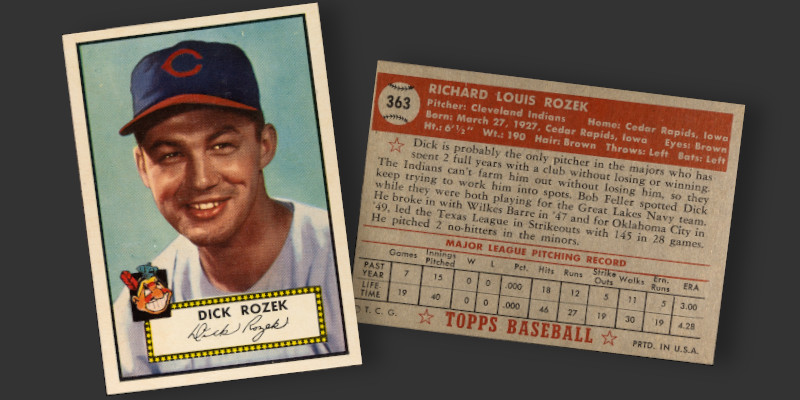
I do not often see ’52 Topps cards that look this clean. Even fewer are high numbers, and those I have viewed came in the form of a slick auction catalog. The centering is a bit off, though the all-important front of the card is better in this regard than the back. Take a close up look at these corners:
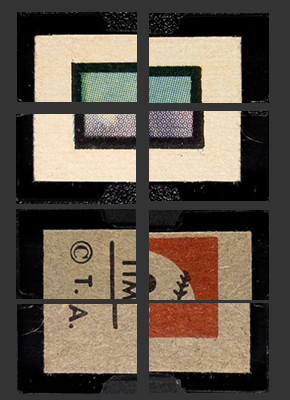
What a fantastic card. Two factors helped it land in my hands.
The first is Rozek’s effectiveness as a ballplayer. Coming up to the majors via Cleveland amid one of the greatest pitching rotations of all time (Feller/Wynn/Lemon/Garcia), he had little opportunity to get into games. The text on the back highlights this by drawing attention to the fact that he had yet to score a decision in a major league game despite having played two full years. When he did see action, there was soon plenty of it on the basepaths. His career total of 65 innings pitched featured an average of a hit per inning and almost as many walks. There was a chance that something more was there given he had previously been a minor league strikeout leader and had authored a pair of no-hitters during that time. It didn’t work out. He was traded (demoted?) to the Philadelphia Athletics at the end of the ’52 season and was only brought out of the bullpen for four appearances before his major league career concluded.
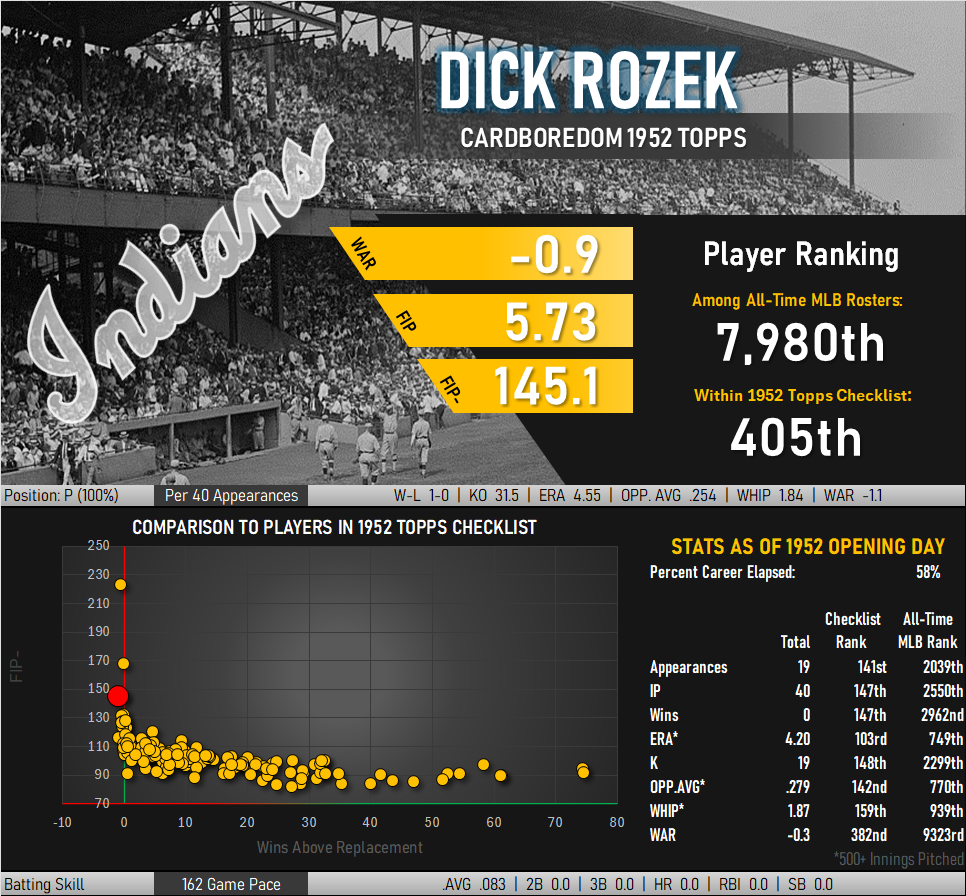
Of course, poor pitching wasn’t the sole determinant of making such an attractive card obtainable. The overriding factor in bringing it to me was the disappointment felt by a fellow collector who submitted it for grading. After spending at a card show what he described as a “sickeningly” high price he was informed by the grading service that the card exhibited evidence of trimming. He wanted this card out of his sight as soon as possible and I wanted it in my collection in a similar timeframe. We quickly reached an agreement and I now prize a card of the otherwise unsung Dick Rozek.
Fun fact: Rozek finished with a career W-L record of 1-0. He retired undefeated.
